
ERP Products for your Business
Everything you need to manage construction, EPC, and infrastructure projects in one powerful platform.
eresource ERP for Discreet Manufacturing - Xcel ERP
Smarter Production. Streamlined Operations. Real-Time Control
eresource ERP for Discreet Manufacturing is designed to simplify and optimize your end-to-end production cycle – from BOM to dispatch. Whether you are assembling machinery, fabricating components, or building to order, our AI-driven, No-Code ERP adapts to your unique workflows with precision and speed. read more
- Key Capabilities:
- Production Planning & Scheduling
- BOM Management & Routing
- Shop Floor Control
- Quality Assurance & Compliance
- Inventory & Material Planning
- Warehouse & Logistics Management
- Purchase & Supplier Management
- Sales Order to Delivery Tracking
- Project-Based Manufacturing Support
- Accounts, Costing & Financial Control
- Supply Chain Management
- Product Lifecycle Management
- Job Costing & Activity-Based Costing
- Engineering Change Management
- Maintenance Management
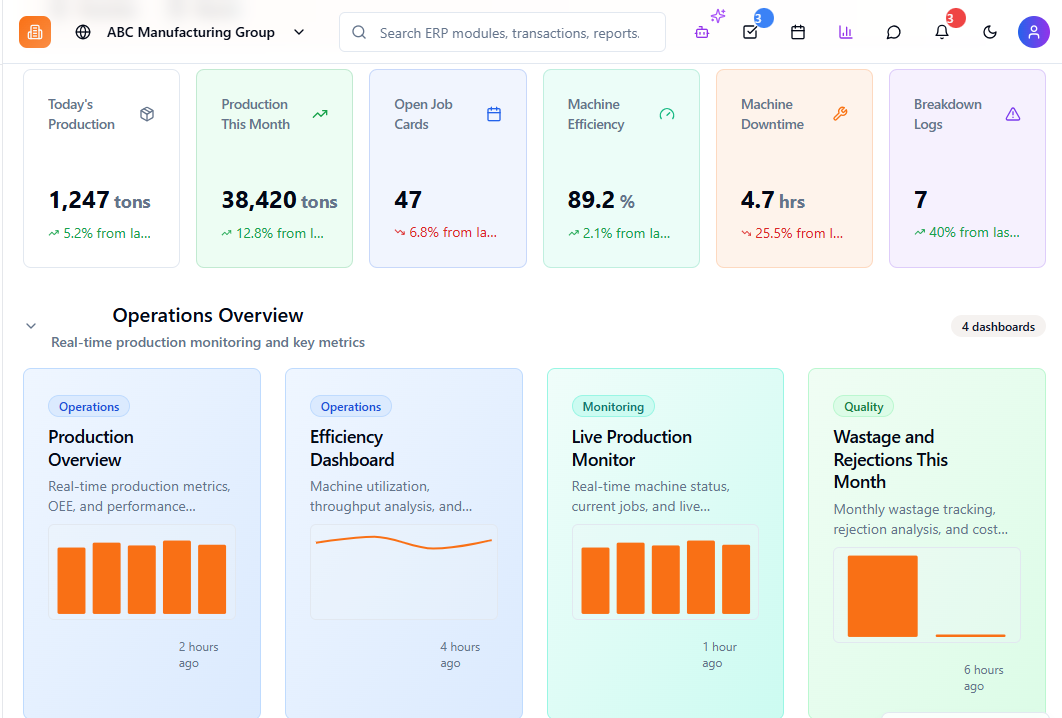
eresource ERP for Process Manufacturing - Bpro ERP
Precision-Driven. Batch-Ready. Compliance-Focused.
- Key Capabilities:
- Batch Manufacturing & Batch Production Tracking
- Formula & Recipe Management
- Batch-Expiry & Shelf-Life Monitoring
- Quality Control & Lab Testing Integration
- Yield, Waste & By-Product Management
- Material Requirement Planning (MRP)
- Inventory & Lot-Based Traceability
- Regulatory Compliance & Audit Trails
- Procurement, Sales & Distribution
- Financials, Valuation & Costing
- Production Scheduling
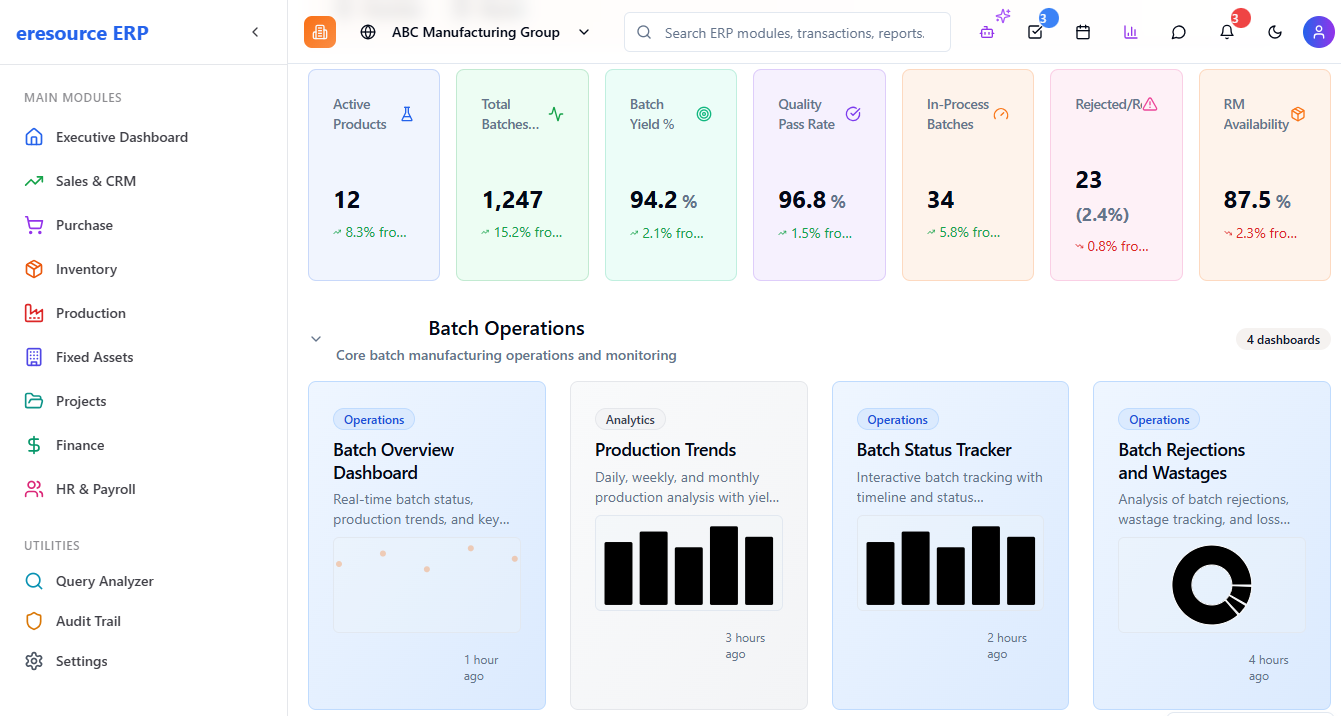
eresource ERP for Construction - Nfra ERP
Streamlined Estimation. Centralized Project Control. Insight-Driven Execution
- Key Capabilities:
- Tendering Management
- BOQ and Estimation Management
- Work Order and Variation Order
- Quantity Take Off
- Budgeting and Costing
- Customizable Dashboards & Analytics
- Site Activities Management (On-Site Portal)
- Sub Contractor Management
- Progressive Invoice and Certification
- Purchase and Supplier Management
- Project and Management Accounting
- Asset Management and Maintenance
- Material & Labour Management
- Financials, Valuation & Costing
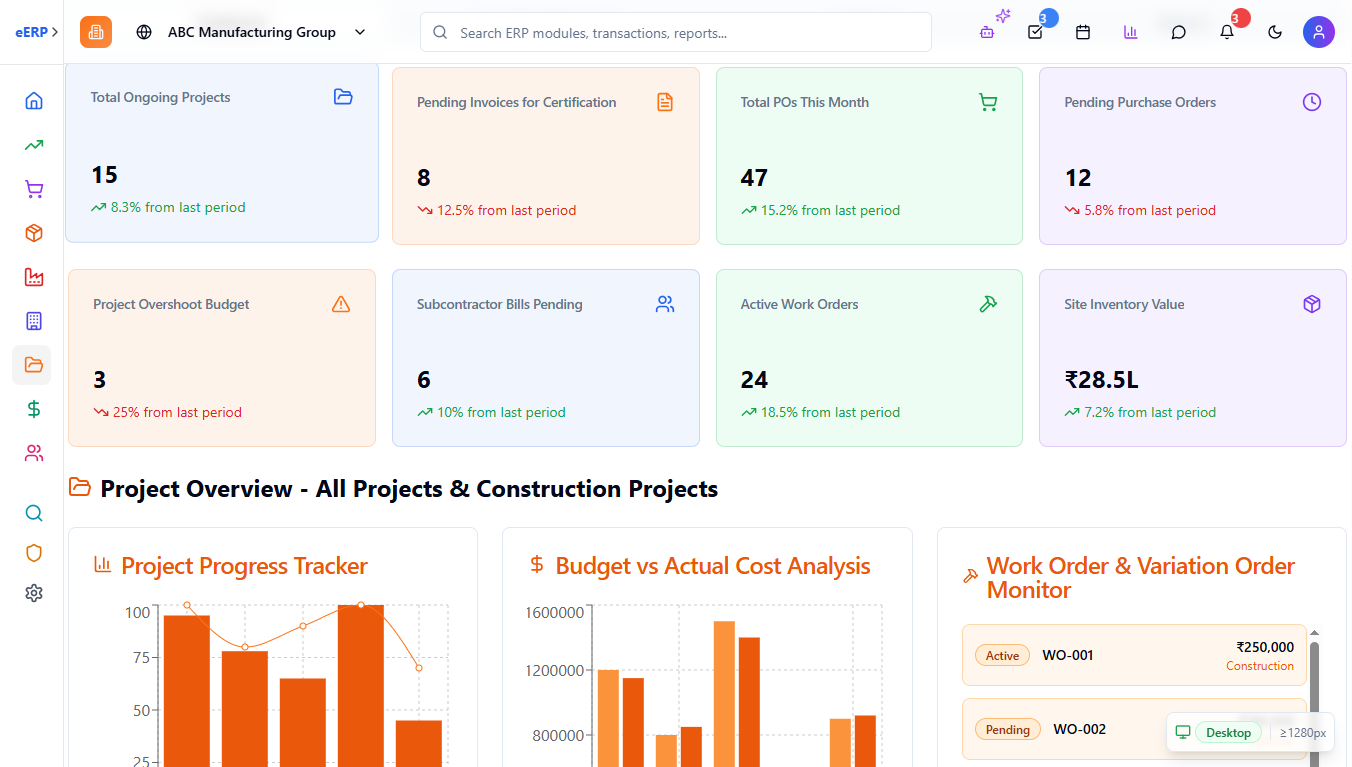
eresource ERP for Transportation - 3GL ERP
Real-Time Tracking. Modular Fleet Control. Connected Logistics
- Key Capabilities:
- Vehicle Management
- Contract and Order Management
- Consignment Note and Loading Orders
- Trip Start and Trip End
- Port & Depot Movement Management
- Route Management
- On Route Expense
- Driver Details
- Accident and Transshipment
- Insurance and Claims
- Insurance and Claims
- Tyre and Battery Management
- Inventory and Spares Management
- Preventive and Breakdown Maintenance
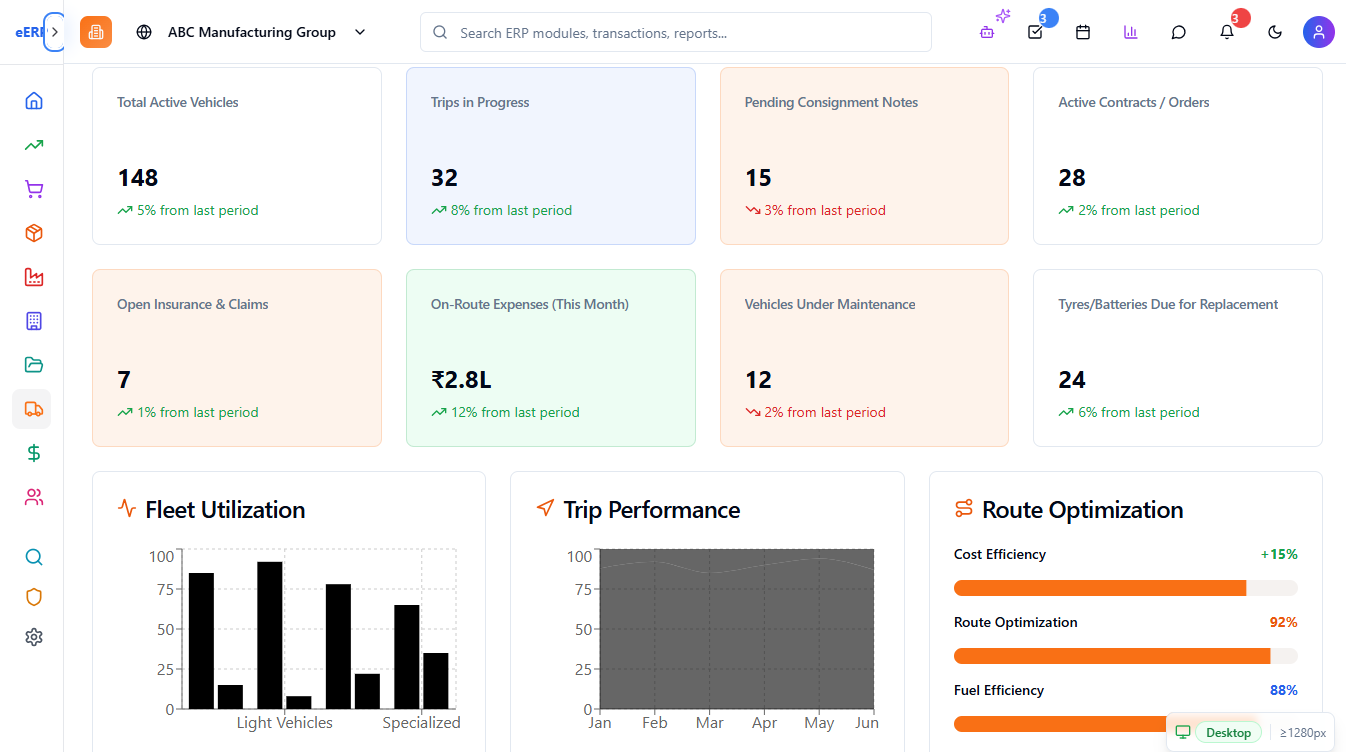
eresource ERP for Trading & Distribution - eTrade ERP
Optimized Inventory. Transparent Finance. Adaptive Distribution
- Key Capabilities
- Inventory & Purchase Order Management
- Sales Order & Distribution Management
- Dealers & Channel Partner Management
- Stores & Warehouse Oversight
- Supplier & Customer Relationship Tracking
- Financial & Budget Management
- Logistics & Delivery Scheduling
- Scheme, Discount & Pricing Control
- Returns & Replacement Management
- Trend Analytics & Business Intelligence
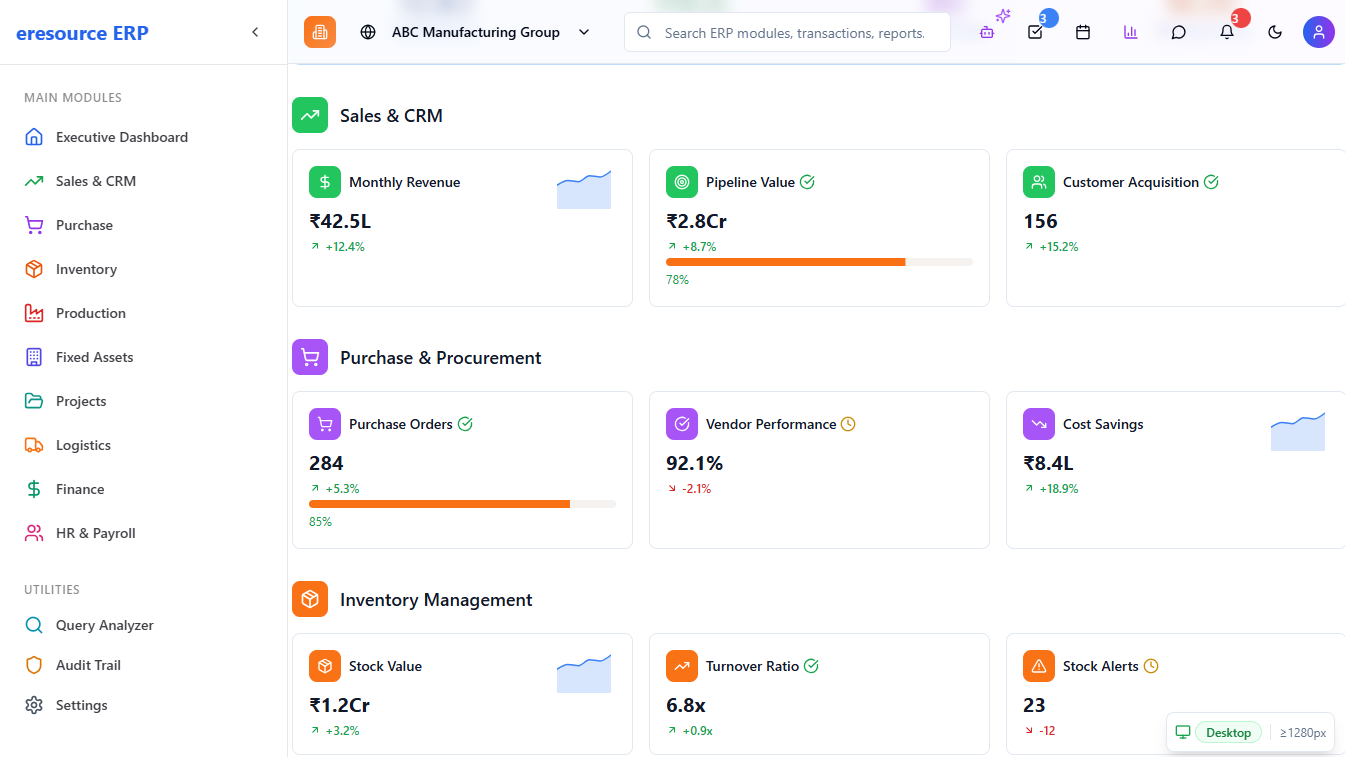
eresource eServe – ERP for Service Industries
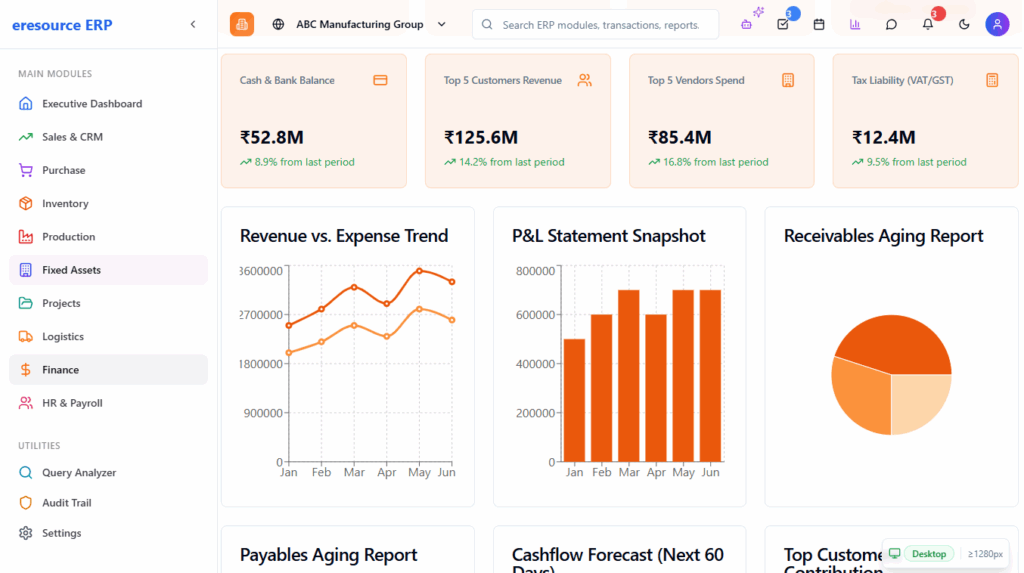
- ERP for Rental Business – Manage equipment, tools, and asset rentals with contract control, billing, and utilization tracking.
- ERP for Events Management – Handle planning, vendor coordination, ticketing, resource allocation, and real-time event finances.
- ERP for Workshop & Maintenance – Streamline job cards, spare parts, labor management, preventive/breakdown maintenance.
- ERP for Facility & Property Management – Manage real estate, property leasing, facility maintenance, and tenant billing.
- ERP for Healthcare & Clinics – Appointments, patient records, pharmacy, billing, and compliance in one platform.
- ERP for Educational Institutions & Training Centers – Admissions, courses, fees, HR, exams, and e-learning integration.
- ERP for Professional Services (Consulting, Legal, Audit, etc.) – Time-sheeting, project costing, billing, and compliance.
- ERP for Hospitality & Catering – Reservation systems, food & beverage management, procurement, and service delivery.
- ERP for Warehousing Services – Optimize inbound/outbound logistics, stock visibility, billing, and SLA compliance for 3PL and warehousing businesses.
- ERP for Freight Management Services – Control freight forwarding, carrier contracts, customs documentation, invoicing, and shipment tracking.
Azaalea P3 – Hire to Retire
- Key Capabilities:
- Employee Master
- Rules & Policy Management
- Attendance Management (Including Biometric)
- Leave Management
- Salary & Payroll Management
- Loans & Advances
- PR & Documentation
- Gratuity & Benefits Management
- Full & Final Settlement
- Asset Allocation & Transfer
- KRA & KPI Management
- Recruitment Management
- Training & Evaluation
- Employee Self-Service Portal (ESS)
- Analytics & Workforce Insights
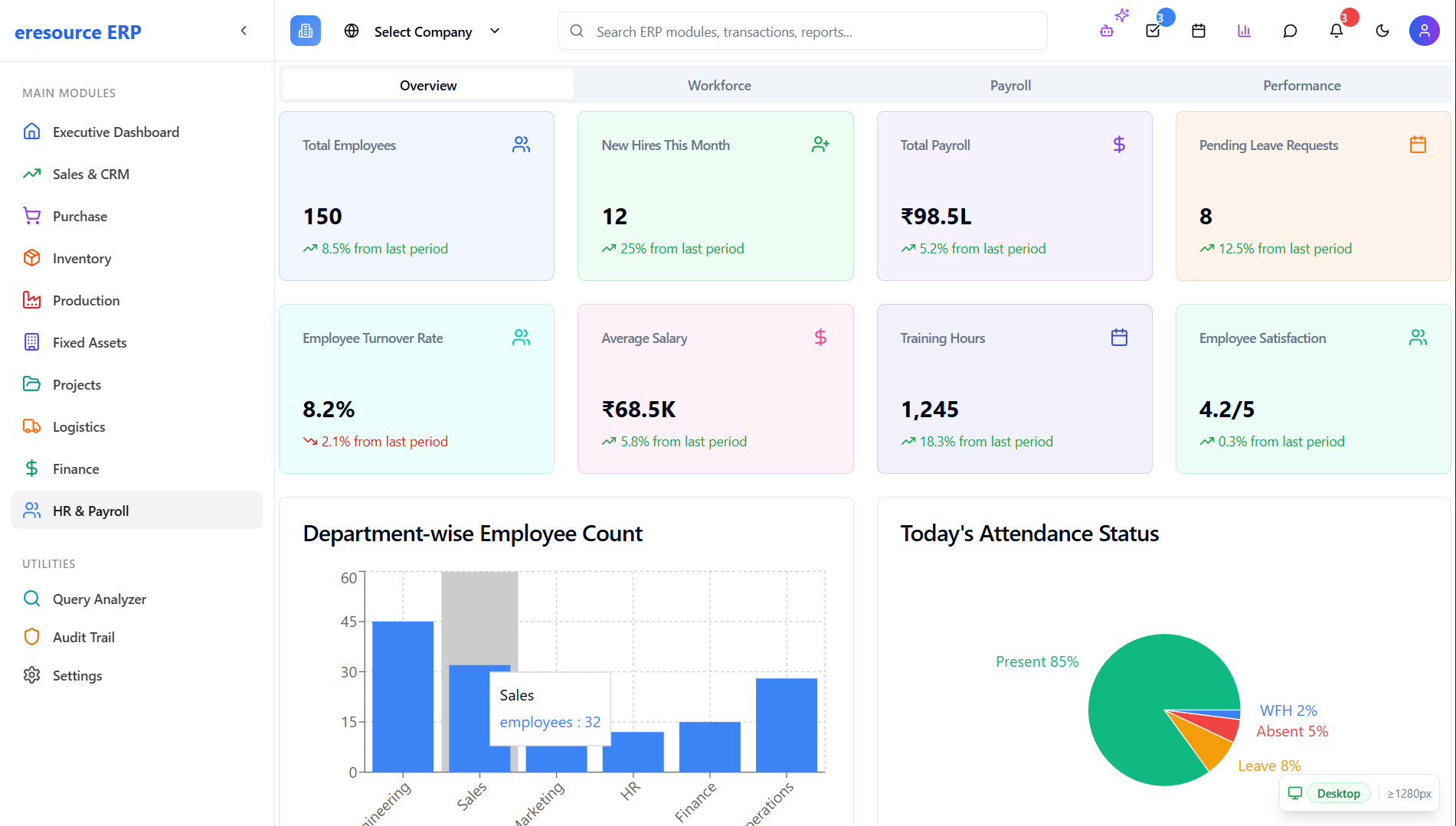
Azaalea C3 – Engage, Convert, Delight.
Azaalea C3 is a next-generation customer relationship management solution that empowers businesses to build stronger client connections, streamline sales cycles, and deliver superior service experiences. Covering sales, field operations, and customer support, it unifies every touchpoint into one intelligent platform.
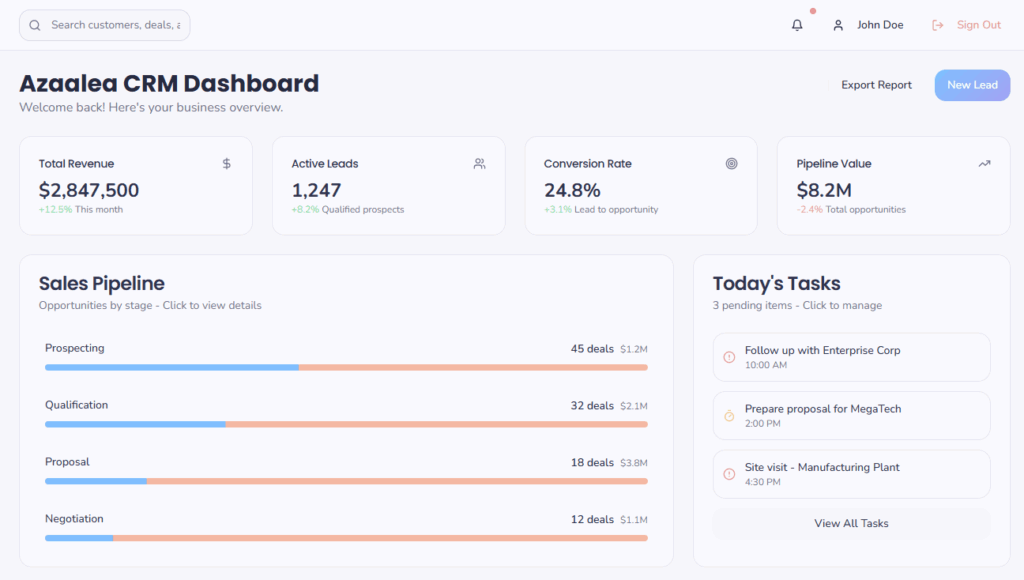
Key Modules:
- Sales Management – Lead generation, opportunity tracking, pipeline forecasting, and closure.
- Field Force Management – Real-time trip planning, location tracking, activity logs, and expense capture.
- Customer Support & Service Management – Case logging, ticket resolution, SLAs, and knowledge base integration.
- Trips & Expenses Management – Plan routes, log mileage, submit expenses, and claim reimbursements.
- Contact & Account Management – Centralized customer database with 360° view of interactions.Quotation & Order Management – Generate quotes, manage approvals, and convert into sales orders.
- Campaign & Marketing Automation – Track campaigns, responses, and customer engagement.
- Service Contracts & AMC Management – Manage warranties, annual maintenance contracts, and renewals.Service Contracts & AMC Management – Manage warranties, annual maintenance contracts, and renewals.
- Task & Activity Scheduler – Assign tasks, follow-ups, and meetings with alerts and reminders.
- Customer Self-Service Portal – Enable customers to track requests, invoices, and service history.
- Mobile CRM App – Field-ready access for sales and service teams to update data on the go.
- Analytics & Reports – Sales funnel dashboards, customer insights, and service performance metrics.
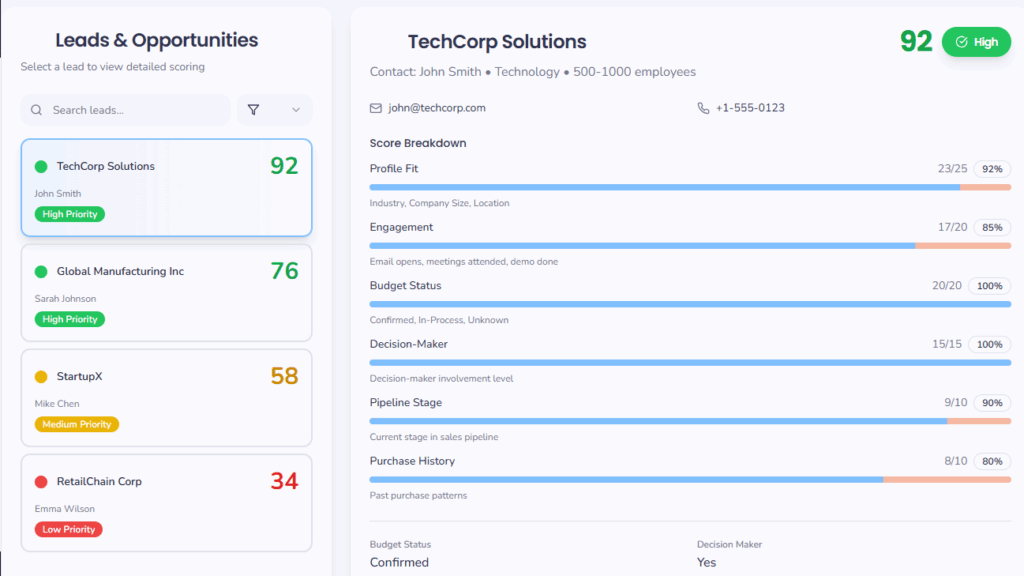
Azaalea OneX – Simplify, Automate, Grow.
Smart Accounting. Scalable Operations. Cloud-Ready.
Azaalea OneX is a powerful yet lightweight business management software designed for growing organizations. Built as a simplified version of ERP, it brings together accounting, invoicing, inventory, and payroll into one easy-to-use platform. Offered in Lite, Professional, and Enterprise editions, Azaalea OneX adapts to your business size and needs—without any customization—making it the perfect subscription-based solution for startups, SMEs, and fast-scaling enterprises.

Key Modules:
- Sales Order Management – Capture, track, and process customer sales orders seamlessly.
- Invoicing & Billing – Generate professional invoices, automate billing cycles, and track payments.
- Delivery & Dispatch Management – Manage delivery notes, shipment tracking, and customer updates.
- Inventory Management – Real-time stock monitoring, valuation, and warehouse oversight.
- Purchase Management – Automate purchase orders, vendor tracking, and approvals.
- Accounts & Financial Transactions – Journals, ledgers, trial balance, and reconciliation.
- Project Accounting – Track project costs, revenues, and profitability.
- Production Journal Vouchers (JV) – Record production costs, wastage, and job allocations.
- Financial Accounting & Compliance – Balance sheet, P&L, tax compliance, and financial reporting.
- Payroll Management – Salary processing, deductions, statutory compliance, and payslips.
With subscription flexibility (Lite, Professional, Enterprise), no customization, and ready-to-use modules, Azaalea OneX positions itself as the ideal accounting + mini-ERP system for businesses that want ERP power without ERP complexity.


